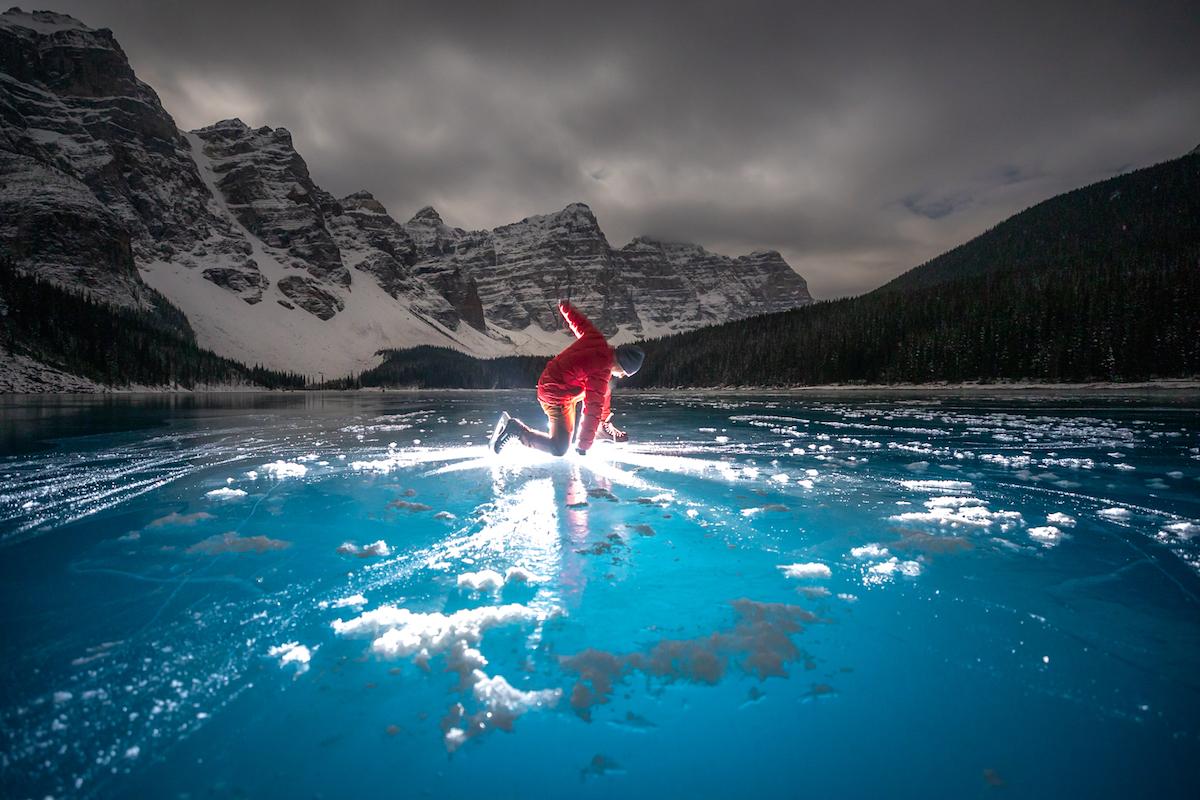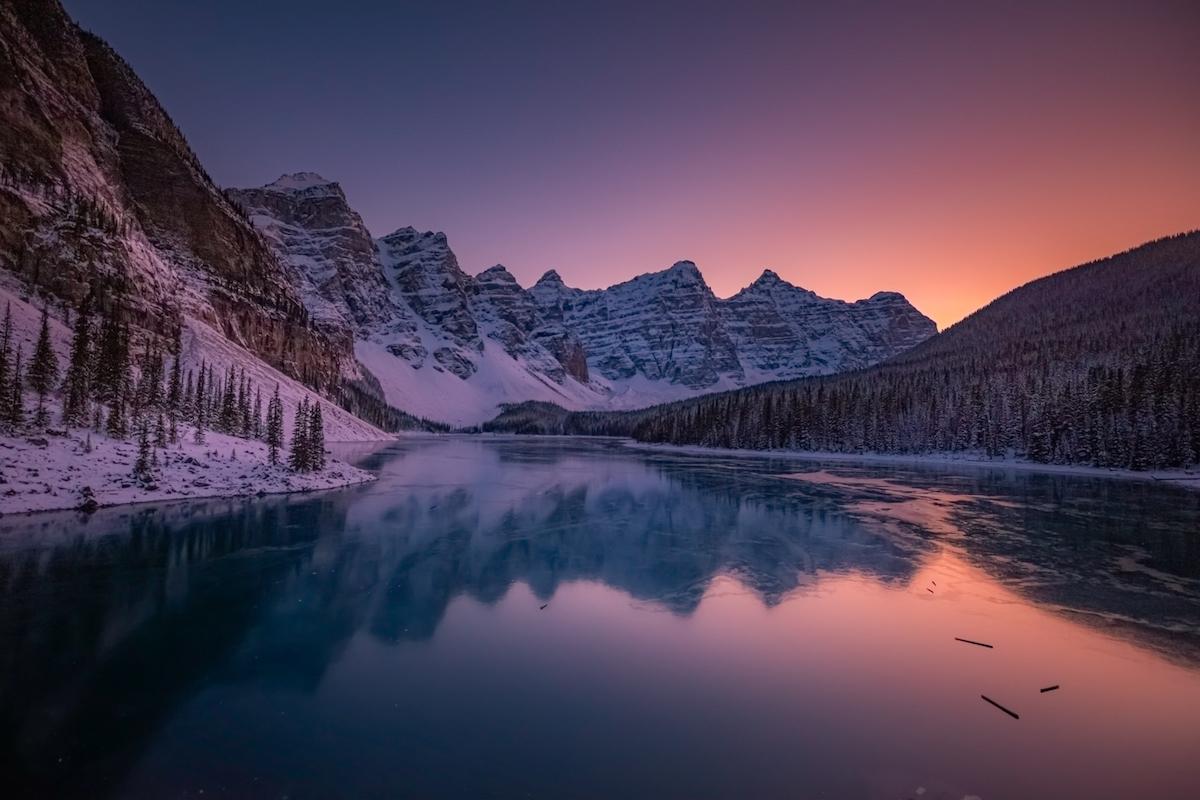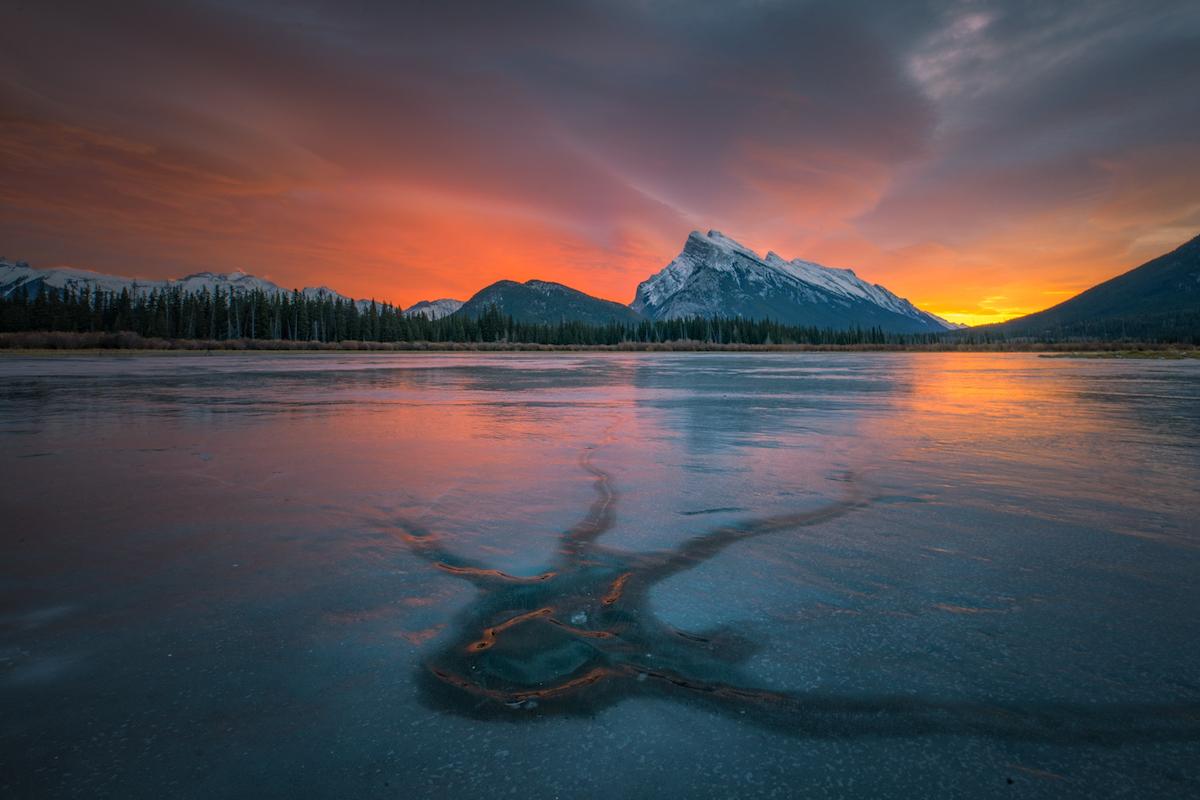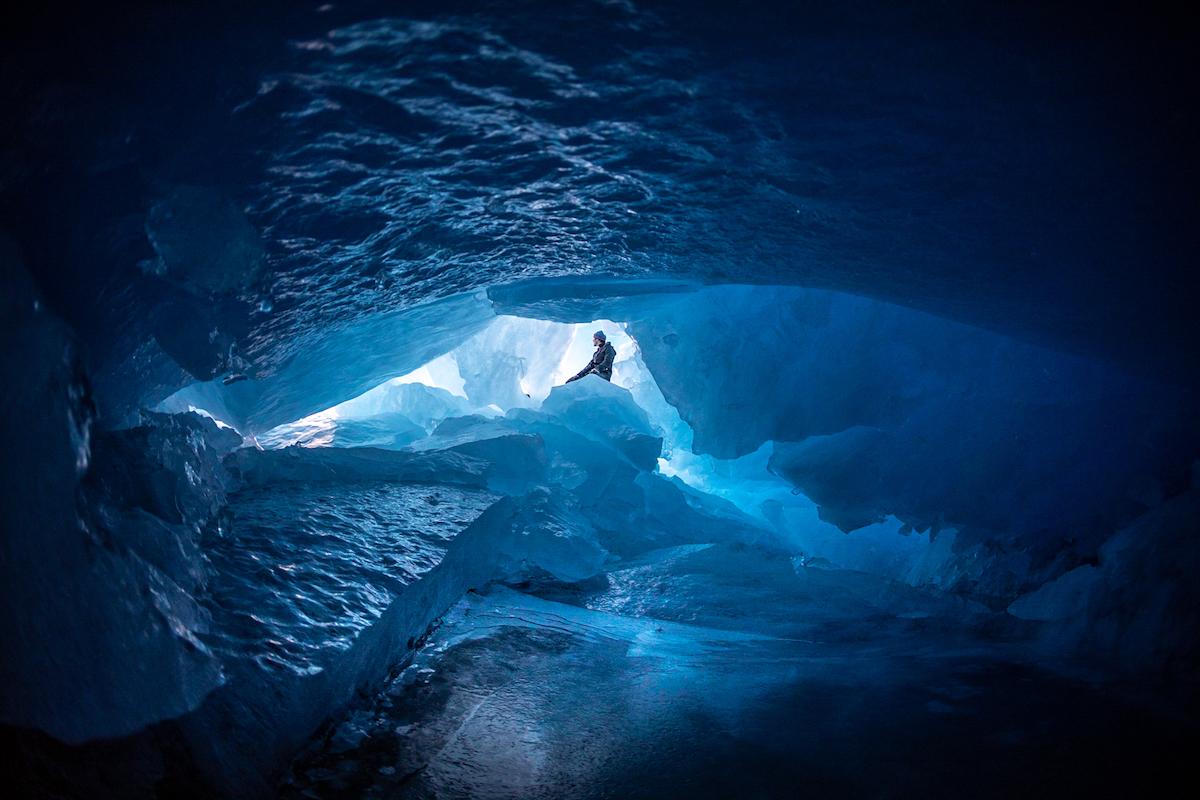
A self-portrait of Stanley Aryanto at Moraine Lake in Banff National Park/Stanley Aryanto, The Wicked Hunt Photography
For a few precious weeks in early winter, usually after the water freezes and before the first snowfall, some lakes in Alberta’s Rocky Mountains form “wild ice.” The smooth surface is temporarily skateable and sometimes gorgeous frozen bubbles can be seen just beneath the surface.
When Stanley Aryanto moved to Banff in 2019, living in Lake Louise and then Canmore, he couldn’t wait to experience wild ice. The travel/landscape photographer, educator and explorer runs the Wicked Hunt Photography and says “the photo is kind of the bonus for me. The main thing is for me to find the experience.”
Aryanto will never forget his first wild ice at Moraine Lake in Banff National Park. He hadn’t skated for a decade and had only heard stories about wild ice, but “it’s actually true and I was really excited to find out about it. One of the coolest things is just skating, especially when the night is clear.”
A self-portrait captured that idyllic first experience, with Aryanto clad in a bright red winter jacket and kneeling “Marvel super hero” style on the ice. “It’s one of my iconic, and one of my favourite, photos,” he says from his current home base in Bali. Two days later, a snowstorm arrived, roads closed and the window to experience this fleeting example of wild ice closed, too.

The sun sets on Moraine Lake's wild ice/Stanley Aryanto, The Wicked Hunt Photography
Another time while heading to Moraine Lake, Aryanto spotted the sky “burning up” and poised to create a colourful sunset. But conditions changed by the time he arrived and things looked boring. Luckily, he decided to wait an hour and the sky turned a magical shade of purple. “It was incredible,” remembers Aryanto. “It was one of those things I’ve never seen before.”
He later found and photographed wild ice at Lake Minnewanka, Lake Louise and Vermilion Lakes in Banff, as well as other spots outside the national park.
One experience, at Vermilion Lakes with the iconic Mount Rundle in the background, stands out. He woke up late to go skating and should have been in a different spot, but the sky cooperated and while skating he spotted a unique shape in the ice.

A unique pattern in the wild ice at Vermilion Lakes with Mount Rundle in the backdrop/Stanley Aryanto, The Wicked Hunt Photography
He shares one more shot, this time of a secret ice cave somewhere in Banff National Park. “It’s one of the coolest places I got to see in Alberta.”
For a man who grew up in Indonesia and Australia and taught himself to skate at indoor rinks, what Aryanto loved about Canada was the chance to finally skate outside on something that was not man-made.
He’s aware that interacting with wild ice means taking safety precautions.
Parks Canada doesn’t monitor natural ice surfaces for safety or mark potential hazards, but it does offer general warnings.
“It’s tempting to venture on the clear lakes at this time of year, but the ice is still thin,” Banff National Park Tweeted on Nov. 8. “Don’t venture out if you’re not sure of conditions.”
The Tweet included a link to its skating safety page, which recommends ice be at least 15 centimetres (6 inches) thick for walking or skating alone, and 20 centimetres (8 inches) for skating parties or games. It suggests wearing personal flotation devices while skating if you don’t know the ice thickness and to pack ice picks to help yourself out, and rope to reach someone who has fallen though the ice.

A secret ice cave in Banff National Park/Stanley Aryanto, The Wicked Hunt Photography
Aryanto remembers being terrified about falling into a frozen lake, but says he watched enough videos to know how to get out. When he really did go through the ice once in Moraine Lake, after carelessly stepping into an area with methane bubbles, it was luckily only waist deep. “Before I was a photographer, I was an engineer and did a lot of risk management,” he explains. He got out, analyzed whether he was hurt or cold, realized he was fine and it was warm, and so kept shooting for another half hour.
Ultimately, he likens experiencing wild ice to living in a movie.
“There’s nobody there and there’s lot of silence and on a clear day you have all these stars above you. It’s definitely one of my happiest moments — just the sound of skates under the stars on this beautiful lake surrounded by beautiful mountains. It’s something I’d encourage people to try — safely, of course. It’s a one-of-a-kind experience for sure.”



Add comment